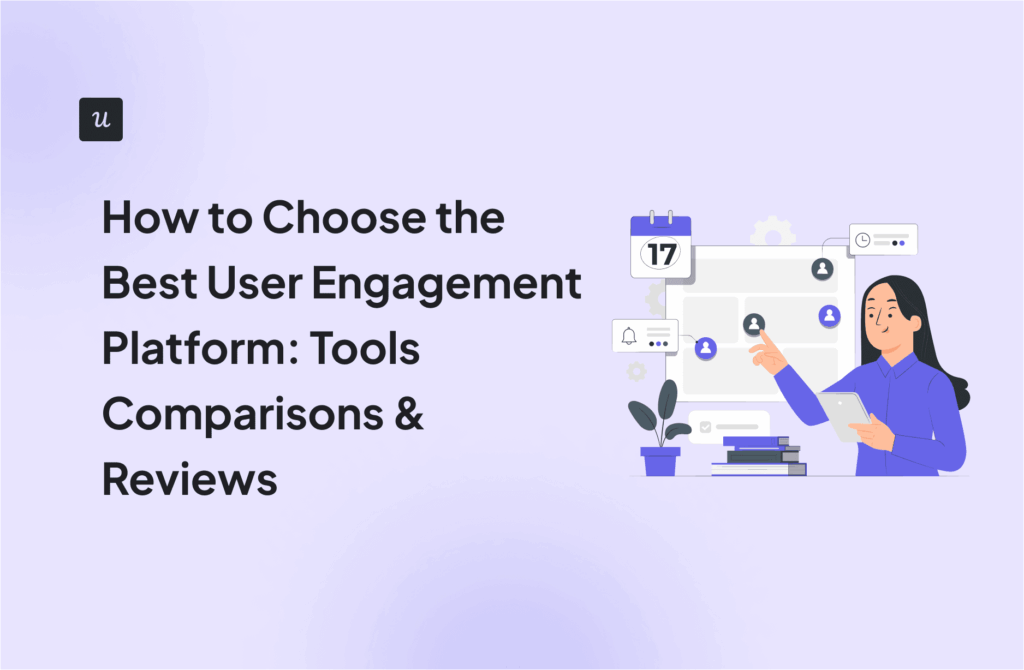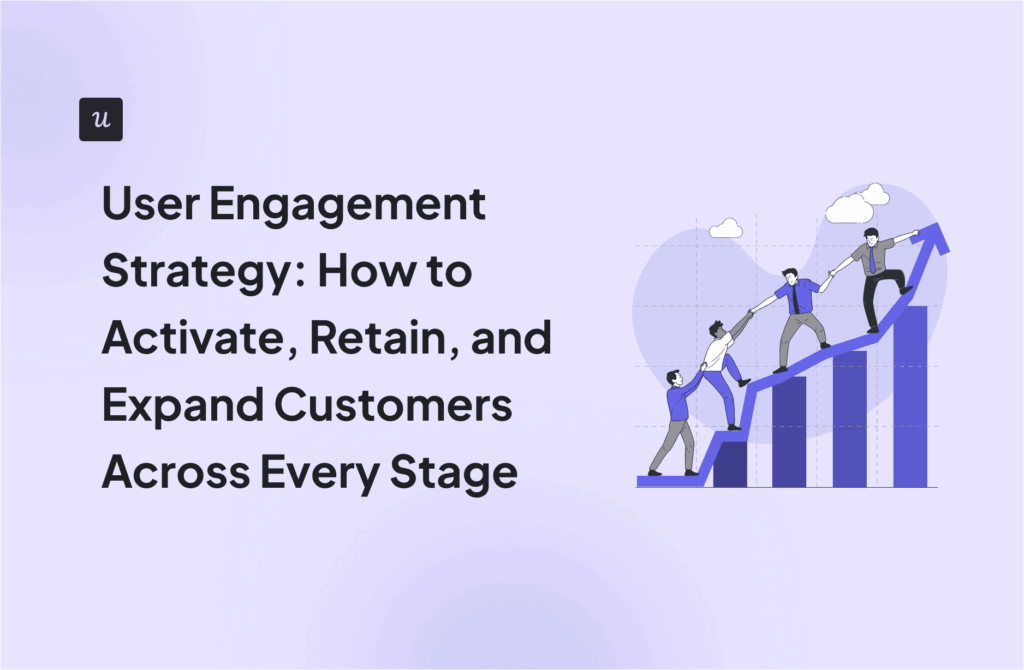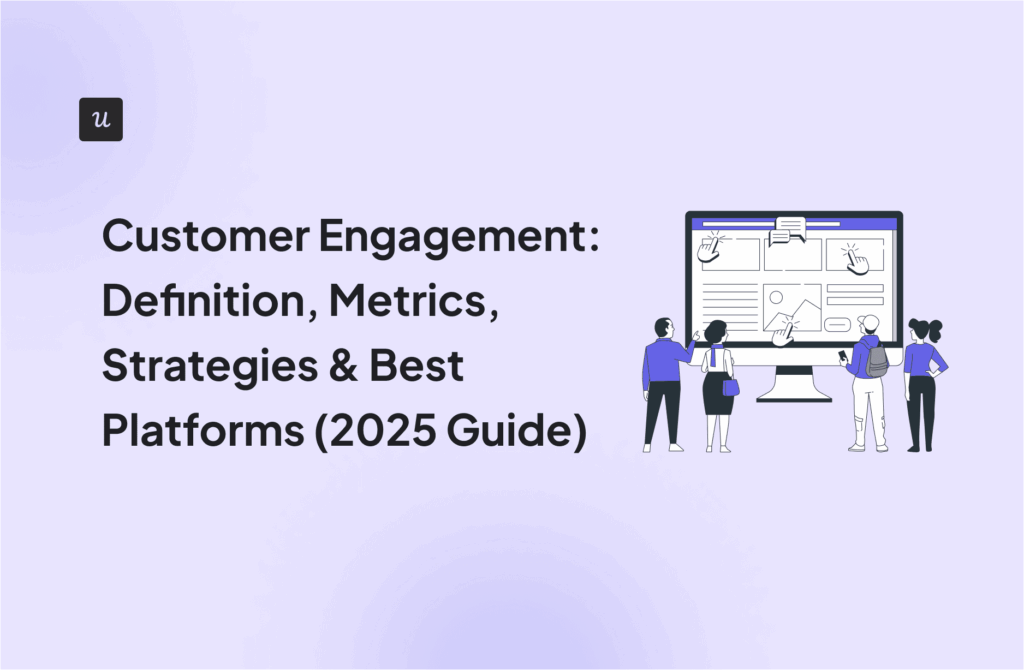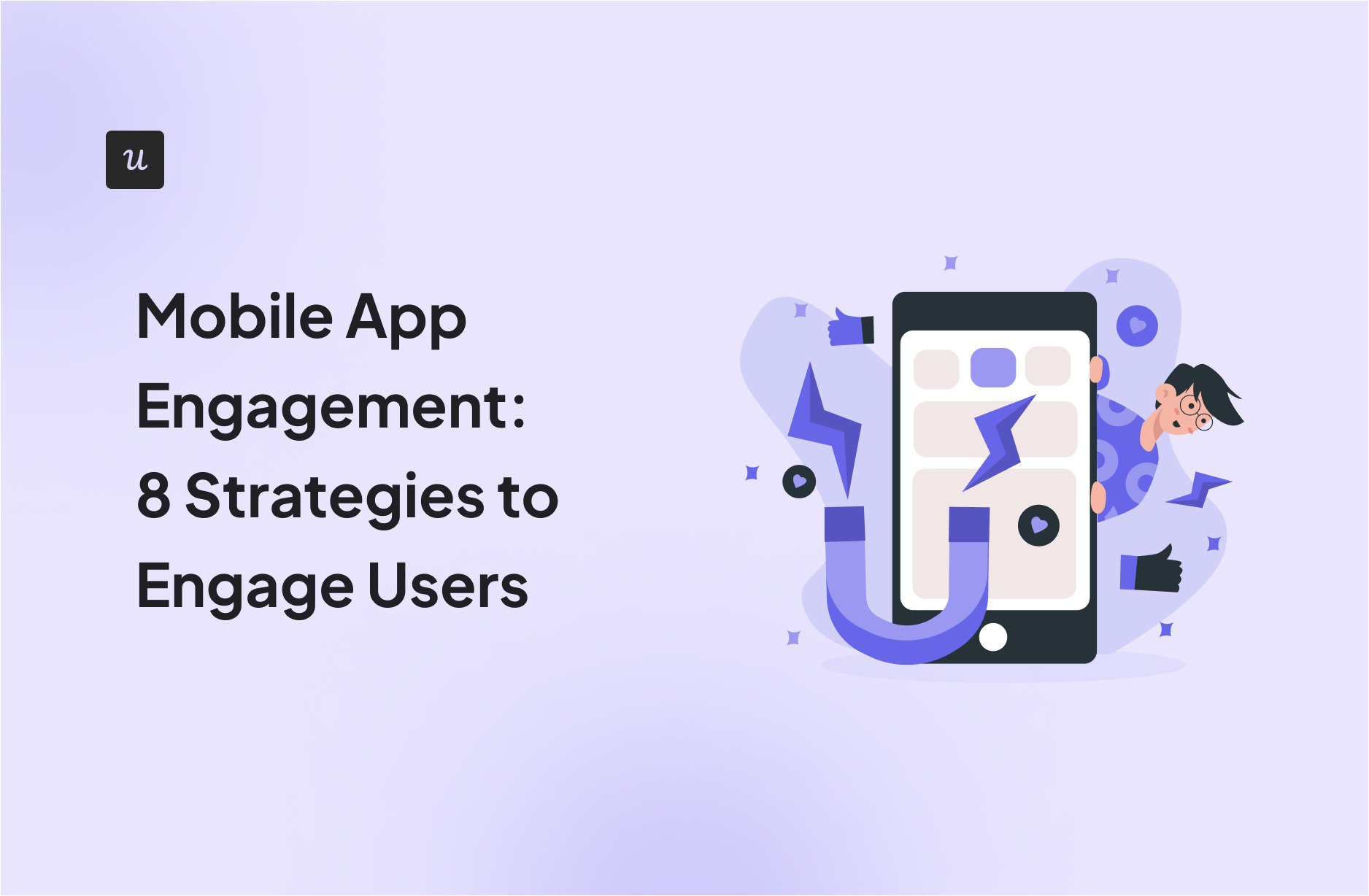
Mobile app engagement isn’t just a metric. If you look at the data, only 26% of users return to an app after the first day, and just 7% are still active after 30 days.
That’s what you’re up against when you launch a mobile product. And in most cases, it’s not because the product is broken. It’s because users don’t get to value quickly enough or don’t build a habit around it.
As a product manager, I’ve made the mistake of focusing too much on shipping velocity. I’ve learned that engagement isn’t something you layer on later. It has to be designed into the product from day one, starting with onboarding and continuing through every feature a user touches.
That’s where strategy makes the difference.
In this guide, I’ll walk through eight strategies we’ve used at Userpilot to increase mobile app engagement and foster customer loyalty across mobile products.
Try Userpilot Now
See Why 1,000+ Teams Choose Userpilot
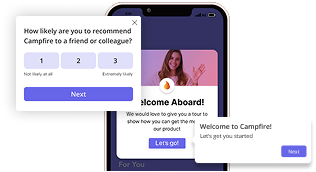
Why is it important to increase mobile app engagement?
I use engagement data to spot real patterns: what users care about, where they’re dropping off, and which features quietly succeed without fanfare. It’s the difference between guessing and knowing what to build next.
- Improves user retention: The more users engage with your app, the more likely they are to stick around. And retaining users is far more cost-effective than trying to grow your monthly active users from scratch.
- Generates richer behavioral data: When users interact consistently, you collect meaningful behavioral insights. These signals, along with direct user feedback, help identify friction points, prioritize product improvements, and personalize experiences.
- Enables smarter product decisions: Strong mobile app engagement fuels your analytics. With reliable data, you can measure mobile app engagement, evaluate feature performance, optimize funnels, and increase feature engagement with confidence.
- Boosts feature discovery and usage: Engaged users explore more of your app’s functionality. This improves adoption rates for new features and helps existing users realize more value from your product.
- Supports organic growth loops: Active users are more likely to share your app, invite teammates, and leave positive app store reviews. They become product champions who drive growth without added cost.
8 Strategies to increase user engagement on mobile apps
With over 5 million apps across Android and iOS in the app market, users have plenty of options, but few reasons to return. The average 30-day retention rate is just 5.7%, meaning 94.3% of users churn within a month.
Mobile app engagement may not be just a design problem. It can be a psychological one. You’re shaping habits, nudging behavior, and competing for attention in a crowded market.
So, how do you do that?
Well, my team and I pulled together eight strategies that have worked across real mobile products, so you can drive mobile app engagement and build stronger user engagement metrics.

#1 Drive mobile app engagement with user behavior triggers
One of the most effective engagement strategies to increase mobile engagement is to use behavioral triggers for your push notifications. These can be delivered through email, in-app messages, or on-screen notifications.
They’re most effective when timed to key points in the user journey, like post-onboarding drop-offs or skipped features.
Behavioral triggers let you engage users based on what they do, or don’t do.
- If a user views a feature but doesn’t activate it, you can follow up with a tooltip or targeted in-app prompt.
- Also, if someone hasn’t opened the mobile app within three days of signing up, trigger a reminder via in-app notification or email.
- If they complete onboarding but skip a core workflow, send a contextual message tied to that drop-off.
One of the best examples came from Duolingo. After I reinstalled the app, I received a series of behavior-based emails over two weeks. Each message landed in the afternoon, tailored to my timezone, and referenced my inactive French lessons. The tone evolved from light nudges (“Your French skills are getting moldy 🫣”) to more reflective prompts (“Am I coming on too strong?”), before eventually stopping.

The final email admitted defeat: ‘These reminders don’t seem to be working.’ They knew I was a lost cause.

With Userpilot, you can build these flows using real-time user behavior data and launch them across mobile and web apps without writing any code.
#2 Turn app users into daily users with habit loops
Habit loops help you build mobile app engagement by reinforcing small, repeatable actions. The pattern is simple: a clear trigger, a low-friction action, and a quick reward. Do it right, and your product becomes part of the user’s routine.
Apps like Duolingo use this well. A five-minute streak is easy to commit to, but hard to break when missing a day resets your progress.

The key is frequency. Notion nudges you to review your daily task list, and Calm reminds you each evening to reflect or unwind. These also encourage users to form a daily rhythm with your app.
You can create similar flows using time-based push notifications. With Userpilot, you can trigger reminders based on behavior or schedule, and link them directly to key actions using deep links.

It’s a simple way to guide your app users back into your mobile app at the right moment, and keep them coming back.
#3 Capture active users early by showing instant value
The first session is your best opportunity to demonstrate your app’s value.
If users have to figure things out on their own, they’re likely to drop off. That’s why the most effective apps guide target users toward value within the first 30 seconds.
YNAB does this well. As soon as you open the app, it asks you to set a few basic spending targets. You don’t need to enter detailed amounts, just estimates. Within seconds, you’re already personalizing your budget and moving toward a meaningful first outcome.

Fitness apps follow a similar approach. After asking for your top goals, they generate a custom routine immediately. This shortens the time to value and helps users feel like they’re already making progress.
You can apply the same principle using mobile carousels in Userpilot. These full-screen, swipeable screens let you guide new app users through setup steps, ask a few key questions, and tailor the experience based on their goals or preferences. It’s one of the simplest ways to create a personalized customer experience right from the start, no developer work required.
#4 Use interactive walkthroughs, not passive tours
Instead of walking users through static tooltips or swiping through generic intro screens, use interactive walkthroughs to help them complete real actions inside the app. When users engage with your product, they invest. And when they invest, they’re more likely to stay.
Examples of meaningful interactions:
- Tapping to customize a dashboard layout.
- Dragging items to reorder a playlist.
- Typing a quick note to save progress.
Craft’s onboarding flow on iOS shows how to do this well. The walkthrough invites users to experiment with styling and interact with formatting tools in real-time, rather than just explaining what’s possible.

This kind of hands-on guidance improves product understanding and increases app engagement metrics like activation and average session length.
At Userpilot, we help teams build code-free interactive walkthroughs that guide users step-by-step through your mobile app’s core features. It’s one of the most effective ways to drive early feature adoption and reduce friction without overwhelming new users.
#5 Introduce new features progressively, not all at once
One of the most common mistakes in mobile onboarding is trying to show everything at once.
When users are flooded with too many options, they often disengage entirely, a behavior known as choice overload. Instead of feeling empowered, users feel overwhelmed and unsure of what to do next.
That’s why it’s better to reveal new features gradually, based on behavior and context. For example:
- Show collaboration tools only after a user has created two or more documents.
- Unlock advanced filters after someone completes a few basic searches.
- Introduce premium dashboards once users have explored the default one.
LINE demonstrates this well. It introduces its “Keep Memo” feature right when users are interacting with the Keep section, when the feature is most relevant.

You can build the same experience using behavior-triggered slideouts in Userpilot, which app developers can implement with minimal effort. These allow you to launch in-app messages when a specific condition is met, like reaching a goal, performing an action, or visiting a particular screen.

This kind of in-app messaging improves feature discovery and supports user satisfaction by reducing cognitive load. And because you’re aligning messaging with behavior, you can track the impact through key metrics like click-through rates, usage frequency, and retention curves.
#6 Encourage repeated app usage with contextual win-back flows
A generic “We miss you!” email won’t bring disengaged users back.
To improve mobile app retention, the messaging has to feel relevant to where the user left off. This is especially important when re-engaging inactive users who haven’t interacted with the app in days or weeks. Contextual win-back flows use behavior data to make that happen.
For example:
- If someone dropped off after using a specific app feature, show them what’s new or improved in that area.
- Highlight fresh and personalized content that aligns with what they last viewed.
- Offer something new, like a template, challenge, or exclusive update tied to their previous usage.
In my case, I had been learning French in Duolingo before uninstalling the app. When they tried to win me back, every email was focused on French content, reinforcing what I had previously shown interest in.

That level of personalization in the user interface makes a difference. It feels like a continuation of my journey, not a generic retention play. To improve win-back flows, you can also collect user feedback at the point of re-entry, either through a short in-app survey or a feedback prompt.
With Userpilot, you can build flows like this using real user behavior. Set conditions based on drop-off points and trigger personalized messages that reflect what users cared about last.
#7 Create an emotional hook tied to user identity to boost customer loyalty
Apps with long-term engagement often reinforce who users want to become, not just what they want to do.
Strava doesn’t just track workouts. It assigns goals, displays badges, and highlights achievements across user feeds. These elements turn regular running into a shared identity. You’re not just tracking a run. You’re part of a community of athletes working toward visible milestones.

Headspace nudges users to reflect daily, framing the routine as part of being mindful and grounded. Duolingo builds language streaks into the UI and uses gentle gamification to encourage consistency. Missing a session feels like breaking a promise to yourself.
These apps are designed for identity. They use behavior, content, and recognition to make progress feel personal.
What does your app help users become? And how can you reflect that through the interface, achievements, or personalized nudges?
#8 Create socially shareable moments and community rituals
Some of the most effective mobile app engagement strategies I have seen include shared experiences and fostering an in-app community.
When you give users something worth talking about, you create momentum that extends beyond the app. These app experiences feel like personal wins, but they’re designed to be visible.
Spotify does this exceptionally well. Every December, millions of users look forward to their Spotify Wrapped summary. It’s personalized, visual, and made to be shared.

Smaller interactions matter too. Features like Music Blend, pop quizzes, or listening stats give users more ways to connect with friends around content they already enjoy.
Strava taps into this dynamic with its community challenges. From 5K badges to pro-athlete collabs, the app gives runners reasons to stay engaged and reasons to share that progress publicly.

These rituals don’t just boost user engagement, they build identity and belonging. Whether it’s a yearly summary or a weekly goal, the key is to give users something that feels personal but invites others in.
If your app has moments worth celebrating, don’t hide them in a dashboard. Celebrate those wins, make them visible, meaningful, and worth sharing.
Enhance your mobile app engagement strategy with Userpilot!
Mobile engagement isn’t just about features. It’s about how, when, and why users interact with your product, and understanding the common app engagement metrics that keep them coming back.
If you want to build flows that adapt to behavior, personalize onboarding, and re-engage users at the right time, you need more than templates. You need a mobile app engagement platform built for cross-platform product growth.
That’s where Userpilot fits in.
With support for mobile-specific UI patterns, behavioral triggers, push notifications, surveys, and in-app guidance, Userpilot helps product teams build mobile engagement into every part of the user journey, without relying on engineering.
It’s not just what we say. It’s what our customers experience.

Ready to design better mobile journeys? Book a free demo with Userpilot and explore how to drive mobile app engagement without writing a single line of code.
FAQ
What is mobile app engagement?
Mobile app engagement refers to how users interact with your app interface over time. It includes behaviors like opening the app frequently, completing actions, exploring features, and responding to in-app messaging or push notifications. High mobile app engagement is often linked to better user retention and product adoption.
How to increase engagement in an app?
To increase engagement in an app, focus on personalized onboarding, behavior-based triggers, timely push notifications, and in-app messaging that reminds users. Use analytics tools to track user behavior, then build engagement strategies around key actions like daily use, feature adoption, and content interaction.
Do mobile apps increase customer engagement?
Yes, mobile apps can significantly increase customer engagement when designed around user needs. Features like personalized push notifications, in-app guidance, and behavior-triggered content help keep users active. Mobile-first apps also allow brands to stay connected with users in real time.
What is the engagement rate of an app?
An app’s engagement rate measures how often users interact with it over a set period. Common mobile app engagement metrics include daily active users (DAU), average session length, and feature usage. A high engagement rate suggests users find ongoing value in the app experience.



